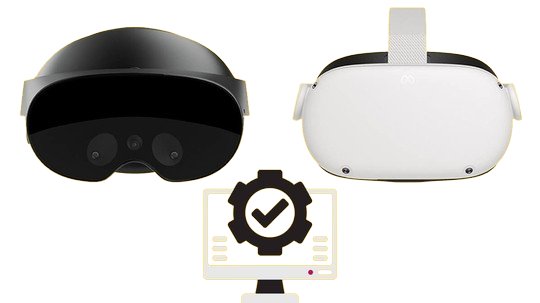GAS & PETROLEUM SAFETY TRAINING SIMULATOR
SANLAB Learning's Petroleum safety training simulator helps users with gas and oil operations. The software, supported by VR and AR technologies, offers theoretical and practical training.
Learning Technologies of
Petroleum Safety Training Simulator
Petroleum safety training simulator offers a realistic training environment. It educates personnel to manage hazardous materials with caution and precision. This simulator uses advanced VR tech. It replicates real-world scenarios in a safe, immersive setting. It ensures that trainees are ready for their high-risk roles.
The simulator has scenarios that simulate emergencies, like gas leaks or pressure surges. Trainees master swift and accurate responses. They must follow industry-standard emergency protocols. These require them to shut down operations, secure the area, and evacuate personnel.
Trainees discover the complexities of operating within a control room environment. The simulator replicates control panels, gauges, and monitoring systems. It lets users learn to manage gas flows and adjust pressure. They must ensure safety during the filling process. Each stage of the simulation emphasizes the importance of safety. Trainees must follow strict safety guidelines. They learn this from initial equipment checks to final inspections. It prepares them to prevent accidents and handle hazardous materials.
The petroleum safety training simulator is interactive. Trainees can engage with a virtual environment. They can make decisions and see the real-time consequences of their actions.

Enhancing Petroleum Safety Training with the SANLAB Learning's Simulator
The best tool for learning gas and petroleum safety is the petroleum safety training simulator. It uses VR and real-time feedback. This lets trainees practice in a safe, controlled environment. The simulator has customizable training modules. It tracks performance and generates reports. These features ensure effective skill development for real-world challenges. It helps ensure workplace safety and operational excellence.
Comprehensive Training Scenarios
Emergency Response Training:
It simulates emergencies, such as gas leaks or equipment failures. Trainees practice quick, effective response techniques.
Operational Procedures:
Petroleum safety training simulator focuses on routine tasks. These include gas filling, pipeline monitoring, and pressure management.
Safety Protocols:
It is vital to follow safety standards. This includes using personal protective equipment (PPE) and following industry regulations.
Key Features of the Petroleum Safety Training Simulator
Petroleum safety training simulator has advanced features. It enhances training by recreating real-world conditions and providing safety-focused learning. The simulator uses advanced 3D graphics. It creates detailed images of gas and petroleum facilities. It also shows dynamic changes in the environment, like lighting and weather. Trainees can engage in scenarios from standard procedures to emergencies.
Petroleum safety training simulator is interactive. It lets trainees engage with a virtual world. They can make decisions and see the real-time results of their actions.
Immersive Training
Experience with VR Support Immerse yourself in the simulation with support for VR, like Oculus and HTC Vive. It envelops the user in a complete training environment. VR integration improves spatial awareness. It lets trainees interact with the simulation as if they were in the field.
Environment
Friendly Training ToolThe simulator emerges as a sustainable training solution. Training in a virtual environment reduces the environmental impact compared to real-world applications. Petroleum safety training simulator teaches gas and petroleum safety. It also helps conserve natural resources.
Real-Time Feedback in
Petroleum Safety Training SimulatorPetroleum safety training simulator detects mistakes in real time during training. It gives users instant feedback. This feature lets trainees learn from their mistakes and improve. It also keeps a user database of training sessions. It tracks progress and performance over time.


Mastering Gas and Petroleum Operations with SANLAB’s Simulator
Gas and petroleum safety training simulator offers training programs. They provide users with the skills to navigate hazardous settings. The simulator prepares trainees to manage complex gas and petroleum operations. It does this by simulating real-world scenarios and providing detailed feedback.
Key Lessons and Scenarios in
the Gas and Petroleum Simulator
Gas Filling Process:
Trainees gain skills to fill gas tanks with safety in mind. They must master valve operations and emergency shut-off procedures.
Leak Detection and Management:
This scenario trains operators to detect and respond to gas leaks. It stresses the need for quick action and strict safety protocols.
Equipment Use and Maintenance:
It focuses on using and maintaining equipment. This ensures efficiency and safety.
Emergency Shutdown Procedures:
Teach trainees to halt operations in crisis situations. This minimizes risks and prevents accidents.
Industries Benefiting from
the Petroleum Safety Training Simulator
Petroleum and Gas Industry:
It helps operators master volatile substances. This ensures safe, efficient work in extraction, refining, and distribution.
Chemical Industry:
The simulator educates personnel in hazardous material handling protocols. Prevents accidents and ensures compliance with safety rules.
Training and Education:
It trains students for energy sector careers. It provides safety training in petroleum operations.
Emergency Response:
Simulates potential emergencies such as gas leaks or equipment failures, allowing trainees to practice swift and effective responses.
Learn More
Download Product Catalogue
Customization Options in SANLAB's Gas and Petroleum Safety Training Simulator
Gas and petroleum safety training simulator has many features. It offers additions and configurations to meet specific training needs.
Configurable Training Modules:
Customize training with modules for petroleum operations. Cover basic safety to advanced emergency response.
VR Integration:
This training environment completely surrounds users in virtual reality.
Performance Reporting:
Use reports to check and analyze operator performance. They help trainers find strengths and areas for improvement.
Contributions of the
Simulator to the Industry
Gas and petroleum safety training simulator is a game changer. It uses precise scenarios to improve training in the petroleum and gas industries.
Increased Safety Awareness:
Enhances operators' safety awareness and prepares them for hazardous situations.
Cost Savings:
Virtual training cuts real-world costs by reducing errors and expenses.
Workforce Efficiency:
It speeds up training. It also improves operators' skills. This boosts workforce efficiency.
Benefits of the Petroleum Safety Training Simulator
SANLAB’s gas and petroleum safety training simulator is vital for safety training. It offers many benefits.
Enhanced Realism and Safety: It is a safe, realistic space for trainees to practice skills. It uses realistic graphics and scenarios, with no real-world dangers.
Cost-Effective Training: Cuts expensive field training. This lowers costs from equipment wear, maintenance, and disruptions.
Varied Training Scenarios: Practices a range of scenarios. These include emergency responses and routine operations. This ensures a complete skill set.
Customizable Learning Experience:It has adaptable training modules for all skill levels. They target specific goals for effective learning.
Real-Time Feedback and Reporting: Monitors performance and gives immediate feedback. This helps trainees find areas to improve and learn faster.
VR Integration: Provides an immersive experience. Trainees engage with simulations, gaining insights into operational environments.
Learning Modules in the
Gas and Petroleum Safety Training Simulator
SANLAB’s gas and petroleum safety training simulator has many training modules. They cater to different skill levels and industry needs. These modules aim to improve safety awareness and skills.
Beginner Modules: Teach safety, equipment use, and procedures to newcomers.
Advanced Modules: They cover complex scenarios and emergencies for experienced operators. They aim to improve their quick and effective decision-making in critical situations.
Customizable Training Content: Tailor programs to specific needs. This aligns training with the company's requirements.
Simulation Technology and Infrastructure
The petroleum safety training simulator has the latest technology. It optimizes the trainee experience and trainer management.
High-Performance Computers: The training simulator has high-performance systems. It can handle complex graphics and real-time data analysis.
Integrated Communication Systems: Advanced systems for real-time interaction during training. They are essential for teaching team coordination in emergencies.
Realistic Physics Engines: The training simulator uses advanced physics engines. They replicate gas and petroleum operations with precision. This helps trainees understand real-world conditions.


Training Environments and Conditions
Gas and petroleum safety training simulator teach users to apply safe practices in diverse environments.
Environmental Variables:
Train in various weather, lighting, and other conditions. This will develop trainees' adaptability.
Hazardous Situations:
Simulates high-risk events like fires and explosions. It prepares users for emergencies.
Time Management:
Users must complete tasks within them to work better under pressure.
Reporting and Evaluation
Petroleum safety training simulator has tools for reporting and analysis. It optimizes training and tests user performance.
Performance Analysis:
We analyze training data to find users' strengths and weaknesses. This enables trainers to give tailored feedback.
Progress Reports:
They track users' performance over time. They help set goals and identify steps to achieve them.
Training Effectiveness:
Use tools to measure training and find areas for improvement.
Petroleum Safety Simulator Hardware Requirements
• 1 simulation computer
• 1 monitor/TV
• 1 virtual reality glasses
• 1 stand

Quantification and Consideration
Name of the institution providing education
Name of the person providing education
Measurement and quality control
Data from the completed course
Student name
Date the course was given
Total duration of the course
Reports of completed lessons














